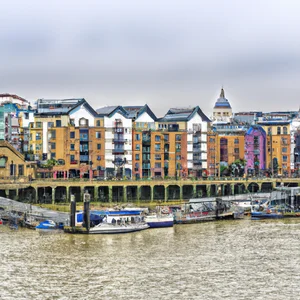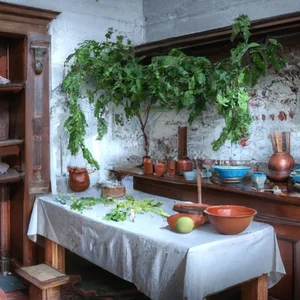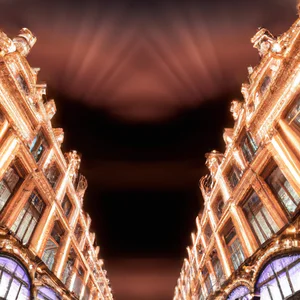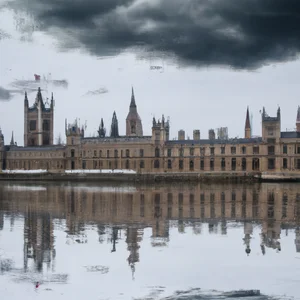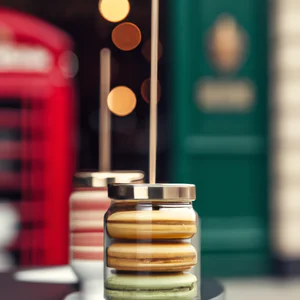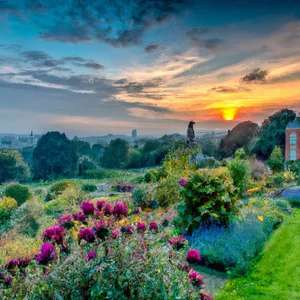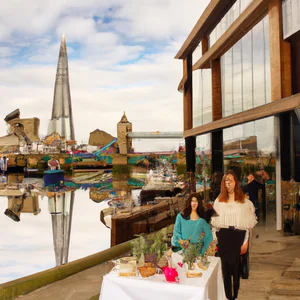Book your experience
Houses of Parliament: discovering the political heart of the United Kingdom
In short, Parliament is the beating heart of British politics, isn’t it? It is that place where the fate of the country is decided, and not only that. When I went there for the first time, I have to say that the atmosphere was really electric. It’s like walking into a historical film, with those majestic buildings and people hurrying here and there, all busy with their own business.
Let’s face it, the Parliament Building is a real architectural jewel. The towers, the statues, Big Ben… every corner has a story to tell. It almost makes you nostalgic, as if you wanted to go back in time and witness all those fiery discussions, a bit like when you sit at the table with your family and discussions on the hottest topics break out. Well, it’s a bit like that in there, with politicians challenging each other with words.
And let’s not talk about the live sessions! I think it’s an unmissable show. There is this feeling of participation, as if you were part of something big. Of course, sometimes there are arguments and bickering that feel more like a bar fight than a serious discussion. But that’s the beauty of it, right? The passion is palpable.
I don’t know, but I think visiting Parliament makes you feel a little more connected to British history and culture. It’s like watching a documentary, but live, with the protagonists moving in front of you. And then, who wouldn’t want to say they’ve seen where the future of a nation is decided? Maybe it’s a romantic idea, but it always has a certain effect on me.
In short, if you are around London, don’t miss the opportunity to pop in there. Maybe bring a friend along, so you can have a chat and laugh at the oddities you see. It’s an enriching experience, and who knows, maybe it will even make you want to take a little more interest in politics!
Discover the iconic architecture of the Parliament
A close encounter with history
During one of my first visits to London, I was struck by the majestic silhouette of the Houses of Parliament which stood majestically along the banks of the River Thames. As the sun set, the elaborate details of the Gothic-style towers lit up, creating an almost magical atmosphere. I remember thinking: This is the heart of British power. The architecture of the Parliament is not only beautiful; tells stories of centuries of history, crucial decisions and cultural changes that have shaped the United Kingdom.
Practical information on architecture
The Palace of Westminster, seat of Parliament, is a masterpiece declared a World Heritage Site by UNESCO. Its construction began in 1016 and, after a devastating fire in 1834, it was rebuilt in Victorian Gothic style thanks to the architect Charles Barry and his collaborator Augustus Pugin. Today, you can see landmarks such as the Clock Tower, better known as Big Ben, and the grandiose St Stephen’s Hall. For those who wish to find out more, it is advisable to visit the official website of the Parliament, where you will find timetables and information on the architectural tours available.
An insider tip
If you want a unique experience, I recommend visiting the Houses of Parliament during the week of the London Architecture Festival. During this event, experts offer special tours that reveal little-known details about the architecture and history of the palace, making the visit even more engaging and meaningful.
Cultural and historical impact
The architecture of the Houses of Parliament is not just a symbol of power; it also represents the evolution of British democracy. Every corner of the building tells the story of political battles, reforms and movements that have influenced not only the United Kingdom, but also the entire world. The combination of architectural styles and intricate details reflects the passage of time and the importance of politics in the daily lives of British citizens.
Sustainable tourism practices
In an era where responsible tourism is key, Parliament has adopted several sustainable initiatives. During your visit, you may notice the solar panels and efforts to reduce the environmental impact of events taking place within. By taking guided tours, you can contribute to a greener tourism experience.
An evocative atmosphere
Walking through the corridors of Parliament is like traveling back in time. A sense of gravity and solemnity fills the air as visitors move in silence, admiring the stained glass windows and historic paintings. I invite you to take a moment to sit in Victoria Tower Gardens and reflect on what you have just seen. It’s a quiet corner that offers spectacular views of the palace and allows you to savor the essence of Westminster.
Myths to dispel
A common misconception is that the Houses of Parliament are only accessible to politicians and officials. In fact, visitors can take guided tours and even attend public debates. This makes the building not only a place of work, but also a space open to citizens, promoting a sense of inclusiveness.
Final reflection
After exploring the iconic architecture of the Houses of Parliament, I invite you to reflect on how architecture can influence our understanding of history and culture. What stories does the architecture of your city tell? It’s time to look beyond the simple aesthetic aspect and consider the deeper meaning of these iconic places.
Guided tours: a journey into the political heart
A personal experience at the heart of power
I still remember the first time I took a guided tour of the British Parliament. Walking along the ornate corridors, I felt almost like a character in a historical novel, surrounded by tapestries chronicling centuries of political battles and social reforms. The guide, a former parliamentary assistant, shared anecdotes that captured the group’s attention, transforming the sterile architecture into a living narrative. It is in these moments that you feel the beating heartbeat of democracy, an experience that goes beyond a simple tourist visit.
Practical information for your tour
Guided tours of the Parliament take place regularly and are available in several languages. To participate, it is advisable to book in advance through the official Parliament website parliament.uk. Tours run every day, but weekends tend to be busier, so if you want a quieter experience, opt for a visit during the week. Tickets start from £20 and include access to iconic rooms such as Westminster Hall and the House of Commons.
An insider tip
If you are lucky enough to visit during a debate session, ask your guide if it is possible to witness a breakdown of the debate. This offers a unique opportunity to see Members of Parliament in action, creating an atmosphere of electrifying civic engagement that cannot be experienced anywhere else.
The cultural and historical impact of Parliament
Parliament is not just a place of work; it is the beating heart of British history. Every corner of this building tells stories of reforms, struggles and triumphs. It is here that laws were passed that changed the lives of millions of people, from universal suffrage to the abolition of slavery. Its Gothic architecture, with its soaring towers and intricate details, reflects not only the political power but also the cultural identity of the United Kingdom.
Responsible tourism in the heart of democracy
For a more sustainable experience, consider joining a walking tour that combines a visit to the Houses of Parliament with other historic attractions nearby. This not only reduces your environmental impact, but allows you also to discover hidden corners and local stories that often escape traditional tourist circuits.
Immersion in the atmosphere of Parliament
Imagine walking through the historic corridors, listening to the reverberation of your shoes on the stone floor, while the scent of ancient wood surrounds you. Every room, every meeting room is steeped in history, creating an atmosphere that tugs at the heartstrings. The light that filters through the stained glass windows projects an aura of sacredness, making each visit an almost mystical experience.
Activities to try
In addition to the tour, consider attending a public meeting or open session of Parliament, where citizens can listen to live debates. These sessions are often free and offer a first-hand perspective on current British politics.
Myths to dispel
A common misconception is that Parliament is only accessible to a privileged few. In fact, it’s open to all, and the guided tours are designed to be inclusive and informative, making British history and culture accessible to anyone who wants to learn more.
A personal reflection
After this experience, I asked myself: how much do we really know about our political system and its origins? Visiting Parliament is not just a way to explore a historic building, but an opportunity to reflect on our role as citizens and on importance of actively participating in democracy. What is your history with politics?
Historic events that shaped the United Kingdom
I still remember the first time I set foot in Westminster, surrounded by an atmosphere full of history and meaning. As I walked along the River Thames, I found myself contemplating not only the architecture but also the historical events that took place there. Every stone in Parliament seems to tell a story, and every corner is imbued with decisions that have shaped the future of the United Kingdom.
A journey into the past
The British Parliament is not only a place of political debate, but also the stage of crucial historical events such as the Magna Carta in 1215 and the Glorious Revolution in 1688. These events laid the foundations for modern democracy and civil liberties. For those who want to immerse themselves in this history, the Parliamentary Archives offers guided tours and temporary exhibitions, where you can discover original documents and texts that tell the story of the fight for civil rights. Visit their official website for updated information on events and exhibitions.
An insider tip
Here’s a little-known tip: if you have the opportunity to visit during important debates, you can witness direct interaction between members of Parliament. Additionally, you can often find commemorative events or public lectures that offer further perspective on the historical events that took place there. Keep an eye on the calendar of events on the official Parliament website.
The cultural impact
The history of Parliament reflects the struggles and achievements of the British people. Every significant event has contributed to forming national culture and identity. For example, the women’s suffrage movement had a strong representation here, making the Parliament a symbol of equality and civil rights. This historical legacy is alive and continues to influence current generations, making Parliament a place not only of government, but also of memory and reflection.
Sustainability and responsibility
In the context of sustainable tourism, it is important to remember that history is not just to be observed, but to be respected. Visits to Parliament encourage conscious tourism that promotes the conservation of cultural heritage. Make sure you opt for tours that respect sustainable practices and contribute to the preservation of this historic monument.
An experience not to be missed
During your visit, don’t miss the chance to participate in a question and answer session with Members of Parliament, a unique chance to interact with law writers and better understand the political process. This is an unmissable way to experience history firsthand, as you immerse yourself in the beating heart of British democracy.
Myths and misconceptions
A common misconception is that Parliament is only accessible to high-ranking members or politicians. In fact, anyone who can book a tour or attend a session can experience this iconic place. Don’t be discouraged by false beliefs; Parliament is open to all.
Reflecting on all this, I ask myself: what historical event do you think has had the greatest impact not just on the UK, but on the entire global political landscape? This invites you to consider how the past continues to influence our present and future.
A hidden corner: the Parliament garden
An experience between history and nature
I vividly remember my first visit to the Parliament Garden. After exploring the majestic halls and intricate corridors of the iconic building, I decided to get away from the crowds and get lost in this hidden corner. Immersed in greenery, surrounded by centuries-old plants and colorful flowers, I felt like I had entered another world, far from the hustle and bustle of political life. Here, in the heart of Westminster, history and nature merge in a silent embrace.
Practical information
The Parliament Garden is only accessible during special events or with guided tours. To participate, it is advisable to book in advance via the official Parliament website. An event called Open Garden Squares Weekend also takes place every year in spring, offering the opportunity to explore this green space. Local sources report that entry is free for Westminster residents, a benefit that should not be underestimated.
An insider tip
A little-known tip: if you manage to visit the garden during the lunch break of the Members of Parliament, you will have the chance to observe some of them enjoying a moment of relaxation among the plants. This is a great way to capture a more human and informal side of British political life, away from the daily debates and pressures.
The cultural and historical impact
This garden is not just a haven of beauty; it is also a place steeped in history. Informal meetings between politicians and world leaders have taken place here, and the garden has witnessed defining moments in British history. Its presence offers a holistic respite in a context dominated by stone buildings and heated discussions, reminding us that nature has always played a fundamental role in human dialogue.
Sustainability and tourism responsibility
Visiting it is also an act of responsible tourism. The garden is managed following sustainable practices, such as conserving native plants and using eco-friendly gardening methods. Participating in visits that enhance sustainability helps preserve these green spaces for future generations.
Vibrant atmosphere
As you stroll through the paths, the scent of roses and the chirping of birds create an enchanting atmosphere. The bright colors of the flowers mix with the lush greenery, creating a panorama that invites contemplation and reflection. This is the ideal place to unplug and immerse yourself in the beauty of nature, even in the context of one of the UK’s most important institutions.
An experience worth trying
I recommend bringing a book with you and finding a quiet corner to sit and read. There is nothing better than savoring the silence and beauty of this garden while the world politics flows around you. It’s a perfect way to soak up the unique atmosphere of Westminster.
Myths to dispel
A common misconception is that the Parliament Garden is exclusively reserved for members of the government. In fact, it is a place of public access during scheduled events, but it is often overlooked by tourists, which makes it even more special. Don’t miss out on this gem.
Final reflection
After walking among these historic plants, do you ever wonder what stories lie behind every green leaf and every colorful petal? Next time you find yourself in Westminster, take a moment to breathe deeply and listen to the silence tell its story.
How to participate in a session of Parliament
A direct and fascinating experience
I still remember my first time in the British Parliament, when I had the opportunity to witness a live session. The tension in the air was palpable as members of Parliament prepared to debate crucial issues. Sitting in the audience, I was able to savor a historic moment, feeling the beating of the political heart of the United Kingdom. This is a place where decisions that shape the nation’s future are made, and attending a session is like becoming part of a great collective narrative.
Practical information for the visit
Attending a session of Parliament is more accessible than you might think. Sittings are open to the public, and it is not necessary to book in advance, although it is advisable to check the official Parliament website for any updates on sitting dates and times (parliament.uk). Entrance to the Parliament is free, but you need to pass a security check, so be prepared to show ID.
An insider tip
For a truly unique experience, try to attend a Prime Minister’s Questions session, held every Wednesday. This event is an unmissable opportunity to see politicians in action and hear their answers directly on the most pressing issues. Arrive early to secure a good seat and enjoy the buzzing atmosphere surrounding the event.
The cultural impact of Parliament
The chance to attend a sitting of Parliament is not just a tourist opportunity, but represents a precious link with British democracy. Every discussion, every vote, is a piece of history that continues to be written. Living this experience means better understanding the functioning of institutions and the active role of citizens in political life.
Sustainability and responsible tourism
When attending a session of Parliament, it is important to consider sustainability. Parliament has implemented several green practices, such as the use of renewable energy and waste reduction. Choosing to visit this iconic place also means supporting a commitment to a more sustainable future.
An atmosphere to experience
Imagine entering a crowded room, the echo of voices mixing with the rustling of document pages. The historic decorations and luxurious furnishings create an atmosphere of respect and solemnity. Every look, every expression, tells a story, and you are there, witnesses of a moment that could change the course of history.
Recommended activity
After attending a session, I recommend taking a walk around Westminster. The nearby Parliament Garden offers spectacular views and a peaceful place to reflect on the experience you have just had. It’s a great way to connect with the history and culture of the UK.
Myths to dispel
A common misconception is that Parliament sessions are boring or difficult to follow. In reality, discussions can be lively and passionate, and the topics discussed are often of great relevance to the daily lives of citizens. Being present will give you a new perspective on how you make decisions that affect your future.
Final reflection
Participating in a session of Parliament is not just passive observation, but an invitation to reflect on how each of us can contribute to democracy. What questions would you have liked to ask your representatives? Next time you visit Parliament, bring with you your curiosity and commitment to being an active part of your community.
Sustainability in tourism in Westminster
During one of my visits to Westminster, while walking along the Thames, I noticed a group of university students taking part in a sustainability workshop. The idea of responsible tourism that honors the rich history and culture of the area struck me deeply. This moment sparked a reflection in me on how we can all contribute to preserving this unique heritage.
Sustainability: a necessary commitment
Westminster, with its stunning architecture and political significance, is one of the most visited areas of the United Kingdom. However, this influx of tourists can have a significant impact on the environment. Local authorities, aware of this reality, have introduced various initiatives to promote sustainable tourism practices. Recently, Westminster Council launched a campaign to encourage visitors to use public transport, such as the famous London Underground or shared bikes, to reduce the impact of carbon emissions.
A little-known tip
An insider tip that few people know about is the possibility of participating in local events, such as organic markets and street food festivals, which take place in the surrounding parks. These events not only provide an opportunity to enjoy fresh, local produce, but also to interact with the community and learn sustainability practices directly from residents.
Cultural and historical impact
Sustainability is not only an environmental issue, but also a cultural one. Every action we take to reduce our impact helps preserve Westminster’s history. The iconic architecture of the Houses of Parliament, for example, is a symbol not only of political power but also of Britain’s cultural heritage. Protecting these historic places means honoring the past and ensuring that future generations can continue to explore them.
Responsible tourism practices
Taking guided tours organized by companies that adhere to sustainable practices is an excellent choice. These companies often use local guides, promote respect for the environment and return a portion of the profits to the community.
An immersive visiting experience
Imagine walking along the river, with the sun reflecting on the historic buildings, as you listen to fascinating stories of how Parliament has faced the challenges of the time. Every corner tells a story, and every step you take is a way to connect with the legacy of this place.
Debunking common myths
A common misconception is that sustainable tourism is expensive or complicated. In fact, there are many accessible options that are not only environmentally friendly, but also offer authentic and memorable experiences. Choosing local restaurants, using public transportation, and attending community events can greatly enrich your visit to Westminster.
A final reflection
Sustainability in tourism in Westminster is not just a trend, but a necessity. As travellers, we have a responsibility to respect and preserve the places we visit. We invite you to reflect: how can you contribute to more sustainable tourism during your next visit? Your experience at Westminster could not only be educational for you, but also a step towards a more responsible future for ours planet.
A local experience: Enjoy tea in the Parliament
When I had the opportunity to attend an afternoon of tea in the British Parliament, my expectations were high, but what I discovered surpassed all imagination. Imagine sipping a cup of fragrant tea while sitting in one of the historic rooms, surrounded by an atmosphere full of history and politics. Every sip of that tea, accompanied by warm scones and homemade jam, seemed to tell stories of crucial decisions that shaped the United Kingdom.
An authentic experience
Tea in the Parliament is not just a moment of relaxation; it is an experience that reflects British tradition in a unique context. Every Thursday, the House of Commons offers visitors the chance to participate in this historic ritual, combining culture and gastronomy in an environment that few are fortunate enough to explore. To book, it is advisable to check the official website of the British Parliament, where you can find up-to-date information on dates and requirements.
An insider tip
A little secret that few know is that during tea, it is possible to interact with some members of Parliament present. Don’t be afraid to ask questions: many of them are happy to share their experiences and opinions, turning a simple afternoon of tea into a lively dialogue on current issues.
The cultural impact
Tea, a symbol of British culture, has deep historical roots dating back to the 17th century. Enjoying it in the context of Parliament adds a new dimension to this tradition, allowing visitors to understand how tea culture is intertwined with the country’s political and social history. It’s a way to explore not only the palace, but also the traditions that influenced it.
Sustainability and responsibility
It is important to note that Parliament has made significant steps towards sustainable tourism practices. The teas served are often prepared with local and organic ingredients, thus reducing the environmental impact. Choosing to participate in these experiences also means supporting responsible tourism.
Immerse yourself in the atmosphere
Imagine being surrounded by historic tapestries and works of art that tell the story of the Parliament. The light that filters through the windows illuminates the elegantly set tables, creating an atmosphere that is both regal and welcoming. Every detail, from the fine service to the presentation of the desserts, contributes to an unforgettable experience.
An activity not to be missed
If you find yourself in Westminster, don’t just sip tea; try booking a guided tour that includes a stop for tea. These tours also offer access to parts of Parliament that are not normally open to the public, further enriching your visit.
Myths and misconceptions
A common misconception is that tea in Parliament House is an exclusive event reserved for the few. In fact, it is accessible to anyone who wants to have an authentic and one-of-a-kind experience. Don’t be put off by the idea that it’s an activity only for VIPs; it is an opportunity open to all.
Final reflection
After experiencing this special moment, I asked myself: how can a simple cup of tea become a bridge between history, culture and dialogue? The next time you are in Westminster, remember that tea is not just a drink, but an experience that unites past and present. Have you ever thought about sitting at the table with history?
Little-known stories of famous political figures
Imagine finding yourself in the beating heart of London, surrounded by majestic neo-Gothic architecture, and listening to the stories of political figures who have left an indelible mark on the history of the United Kingdom. During one of my visits to the Houses of Parliament, I came across a guided tour that was not limited to recounting the exploits of the most famous politicians, but which focused on forgotten anecdotes, which reveal the challenges and contradictions that these leaders faced .
A journey through the shadows of history
The Houses of Parliament are not just a place of power; they are a stage where stories of passion, conflict and compromise come to life. Among the most fascinating figures is William Pitt the Younger, the young Prime Minister who, at just 24 years old, faced the challenges of the Napoleonic Wars. His determination and eloquence held the nation together, yet his personal life was marked by deep insecurities.
Another notable figure is Emmeline Pankhurst, the leader of the women’s suffrage movement. Often remembered for her bold demonstrations, Pankhurst faced not only political opposition but also societal disapproval, questioning the concept of democracy in an era when women were excluded from voting.
Practical information and insider tips
If you would like to discover these little-known stories, I recommend taking a thematic guided tour, which focuses on less celebrated historical figures. Many of these tours are led by expert guides who have a passion for political history and can offer a lively and engaging interpretation. For up-to-date information, you can visit the official Houses of Parliament website, where you will find details on tours and availability.
An insider tip: take note of the small commemorative plaques scattered throughout the corridors. They often commemorate specific events or personalities who played a crucial role, but who are not widely recognized.
The cultural impact of these stories
The stories of famous and less famous political figures not only enrich our understanding of democracy, but also offer a lens through which we can examine contemporary society. Pankhurst’s fight for women’s rights still resonates today, while the challenges of leaders like Pitt remind us that power often comes with enormous responsibility.
Sustainability and responsible tourism
When visiting the Houses of Parliament, it is vital to consider sustainable tourism practices. Opting for walking or cycling tours to explore Westminster not only reduces your environmental impact, but also allows you to appreciate the beauty of the area in a more intimate and personal way.
An activity worth trying
If you are in London on a parliamentary sitting day, try attending a public session. It is a unique opportunity to see the people’s representatives in action and listen to debates that directly affect the daily lives of citizens.
Final reflections
As you explore the stories of these political figures, I invite you to reflect: what other forgotten stories might lie within the historic walls of the Houses of Parliament? The beauty of this place goes beyond the architecture; it extends to the lives and struggles of those who have walked these same stones. Knowing these stories is a fundamental step in understanding our present and the future of democracy.
Discovering Big Ben: myths and truths
A symbol that goes beyond time
I remember the first time I set foot in Westminster. As I walked along the River Thames, Big Ben rose majestically before me, like an old friend telling stories of times gone by. It’s not just a clock tower; it is a living symbol of British history, a silent guardian of events that shaped the world. Every ring of its bells seems to whisper legends of monarchs, wars and social reforms.
Myths to dispel
Despite its notoriety, there are many misconceptions about Big Ben. For example, many people believe that the term “Big Ben” refers to the whole clock building, but it is actually the name of the large bell located inside the tower. The tower itself, known officially as the Clock Palace, was renamed the Elizabeth Tower in 2012 in honor of the Queen’s Jubilee. A detail that enriches his already fascinating narrative!
An unmissable experience
When you visit the Houses of Parliament, don’t miss the opportunity to get up close to Big Ben. Although access to the interior of the tower is not permitted, you can take a guided tour of the Houses of Parliament which includes a panoramic view of the tower from different angles. I advise you to arrive early to avoid the crowds and enjoy the view in complete tranquility.
Cultural impact
Big Ben has invaluable cultural value, not only for British people, but also for tourists from all over the world. It became a symbol of resistance, especially during the Second World War, when its bells continued to ring despite the bombings. Today, it is a landmark that represents democracy and freedom.
Sustainability and responsibility
Visit Big Ben with a keen eye on sustainability. Local authorities are promoting responsible tourism, encouraging visitors to use public transport and reducing environmental impact. Every small gesture counts, and helping to preserve this heritage for future generations is essential.
A gesture of connection
If you have the opportunity, try sitting on a bench in Westminster Gardens and listening to the bells ring. It’s a simple yet profound way to connect with the story. Closing your eyes, you can almost imagine the din of parliamentary debates and decisions that changed the course of history.
Final reflections
Big Ben is not just a clock; it is a monument to the evolution of British society. Each chime is an invitation to reflect on past challenges and achievements. The next time you see it, ask yourself: What does this symbol mean to me in an ever-changing world?
Tips for visiting without the tourist crowds
One September morning, I found myself in front of the majestic Palace of Westminster, shrouded in a light London fog. As the city woke up, I noticed that the flow of tourists had reduced, and I decided to take advantage of it. Walking along the Thames at that magical time allowed me to appreciate the Gothic architecture of the Houses of Parliament and its famous Big Ben without the onslaught of noisy crowds. This is a well-kept secret among those who know the city: visit Westminster at dawn.
Planning your visit
To avoid the crowds, it is essential to choose the right time. Weekdays, especially Tuesdays and Wednesdays, are best. If possible, book your visit for the early hours of the morning, before group tours start to flood the area. According to the official Parliament website, guided tours begin at 9:00 am, and arriving a few minutes early can make the difference between a peaceful experience and a crowded tour.
Unconventional advice
A little-known tip concerns access to Parliament Gardens. Many visitors do not know that, during Parliament’s lunch breaks, it is possible to access these green areas. It not only offers a corner of tranquility, but also a unique view of the Palace. Bring a packed lunch and enjoy a moment of calm, observing the political life going on around you.
Cultural and historical impact
The architecture of Parliament is not only an aesthetic masterpiece, but represents centuries of British history. Each stone tells stories of debates and decisions that shaped the United Kingdom. Walking its corridors, it’s impossible not to feel part of a cultural legacy that continues to influence the world.
Sustainability in tourism
Visiting Westminster responsibly is one way to contribute to the sustainability of the city. By opting for public transport or a walk, you reduce your environmental impact. In fact, the British government is promoting sustainable tourism practices, encouraging visitors to discover the city on foot or by bicycle, to reduce pollution and preserve cultural heritage.
Immerse yourself in the atmosphere
Imagine walking along the Thames, with the fresh air carrying the scent of the river and the sound of the waves crashing on the banks. The sight of Parliament illuminated at dusk is a sight that will remain etched in your memory. Every corner of this place is full of history and meaning, and visiting it in peace allows you to appreciate its beauty without distractions.
An activity not to be missed
After exploring the gardens, I recommend taking a guided tour of the Palace. Not only will you have access to historic rooms, but you will also be able to hear interesting anecdotes that make the visit even more fascinating. Book early to guarantee your spot, and be sure to check out any special events that may be taking place during your visit.
Myths and misconceptions
A common misconception is that Westminster is always crowded and difficult to visit. In fact, with the right planning and timing, it is possible to explore this iconic site without having to share the experience with thousands of tourists.
Final reflection
After my visit, I asked myself: what stories and secrets lie behind the doors of Westminster? Each visit offers the opportunity to discover new nuances of this extraordinary place. We encourage you to consider visiting during less crowded hours for a more authentic and personal experience.

 Architecture and Design
Architecture and Design Cities and Regions
Cities and Regions Culture and History
Culture and History Events and Festivals
Events and Festivals Fashion and Shopping
Fashion and Shopping Food and Wine
Food and Wine Nature and Adventure
Nature and Adventure Unique Experiences
Unique Experiences


















